Inside Six Senses Shaharut, Southern Israel, Review
Six Senses Shaharut blends right in with the rugged plains of southern Israel, but there’s no shortage of creature comforts at this lavish wellness dwelling.
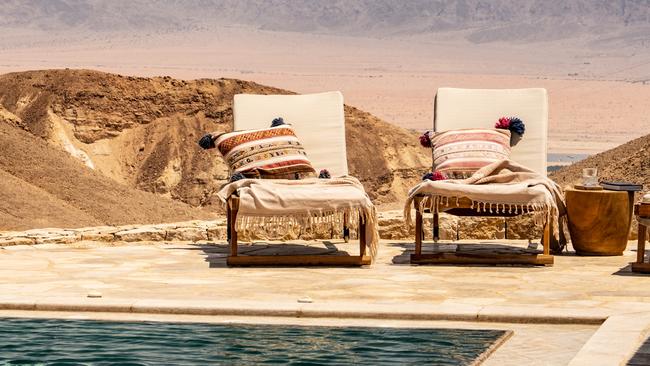
I’ve never heard a silence this loud. Sitting on the terrace of my suite at Six Senses Shaharut, which opened in 2021 near the southern tip of Israel, it feels as though I’m ensconced in a vacuum of sound.
In front of me, the Negev Desert unfurls into a honey-hued nothingness. I watch the morning sun slowly lift the night’s veil from the rock-strewn plateau, trimming the shadows that sharpen the desert’s rugged texture. The breeze on my skin makes the dry heat pleasantly bearable, but there’s no foliage for it to rustle through. There are no chirping birds, not even the whirr of an air-con system. Just blissful quietude.
–
Looking to reboot and relax? Discover life-changing wellness retreats and restorative getaways in the latest edition of Travel + Luxury magazine.
–
What a difference from the day before when I watched the gleaming urban sprawl of Tel Aviv thin out below me from the window of a roaring helicopter. During the 45-minute transfer to Shaharut, I saw the city fade into a patchwork of verdant kibbutzim, palm plantations, and greenhouses with solar-panel roofs. The further south we went, the more the terrain turned into a seemingly endless swirl of ochre and burnt umber, occasionally interrupted by the unmapped settlements of the Bedouin tribes that once reigned over this land. It wasn’t until we hovered right above it that I clocked our destination: five clusters of curved limestone constructions, half-embedded in hills covering an 18-hectare swathe of sand-coloured rock.
Over Champagne and thumb-sized dates in the arrival lounge, I learn that a surprising amount of effort went into making the resort look so unassuming. Owner Ronny Douek, an Israeli entrepreneur and philanthropist, spent almost a decade masterminding this oasis in collaboration with Tel Aviv-based Plesner Architects. They drew inspiration from the Nabataeans, a nomadic tribe that roamed these plains 2000 years ago and carved many of their tombs and temples in the area’s sandstone cliffs (including Petra in southern Jordan, a three-hour drive from the resort).
Barely a smudge on the horizon, Six Senses’ temple to relaxation similarly blends in with its surroundings, for its lodgings, spa, and restaurants have been built from the very stones quarried while digging out their subterranean floor plans. The buildings’ other fixtures feel equally deeply rooted. Patios and pergolas have roofs of reclaimed eucalyptus timber through which the high-noon sun seeps to paint the sandstone floor with shadowy pinstripe patterns.
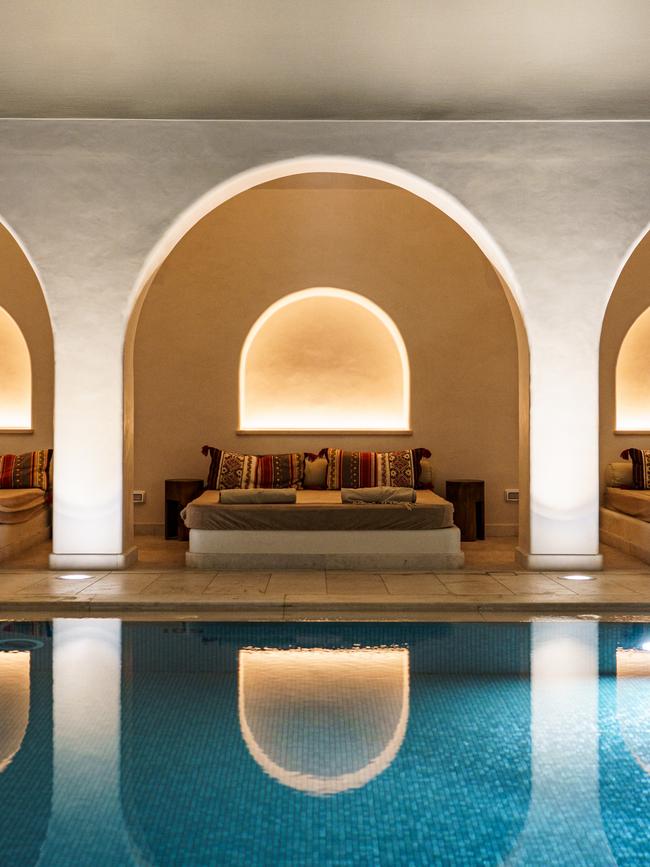
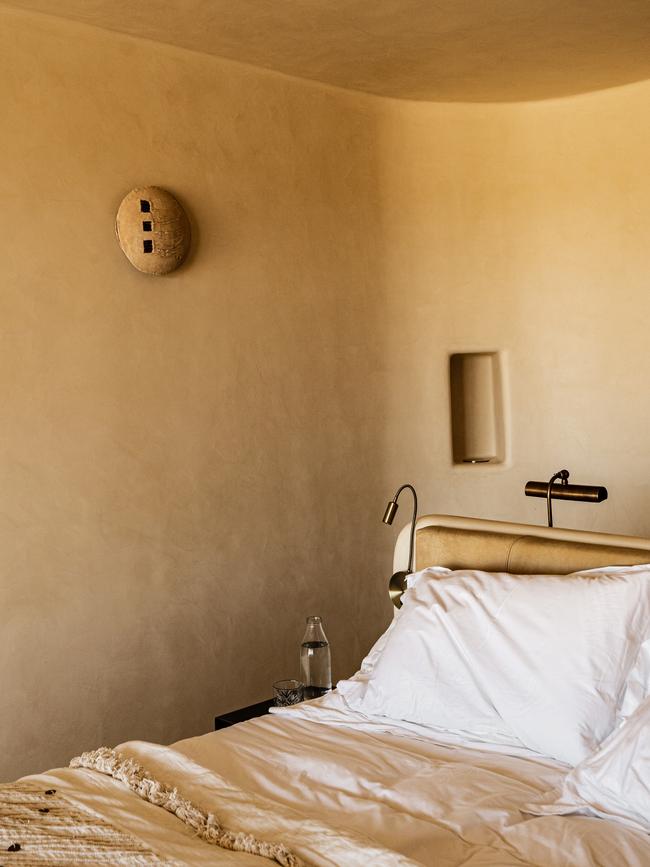
Inside the suites and villas – all clad in creamy Moroccan plaster, with some opening to separate bedrooms and private pools – there are roll-top brass bathtubs, doors carved from reclaimed teak, and Bedouin-inspired throws and pillows with DayGlo-hued tassels for a pop of colour. The buildings are flanked by gardens fragrant with lavender and rosemary, lush enough to warrant a full-time horticulturist on staff.
Even the tiniest details feel decidedly local: tactile ceramic plates and tea sets were produced by a potter from nearby Shaharut, a free wheeling community of international creatives just across the hill. The cost of all this? Douek eventually lost track, but it’s rumoured to have totalled well over $100 million. And it shows. Even though we’re surrounded by desert and the nearest significant city, Eilat, is an hour’s drive away, creature comforts abound.
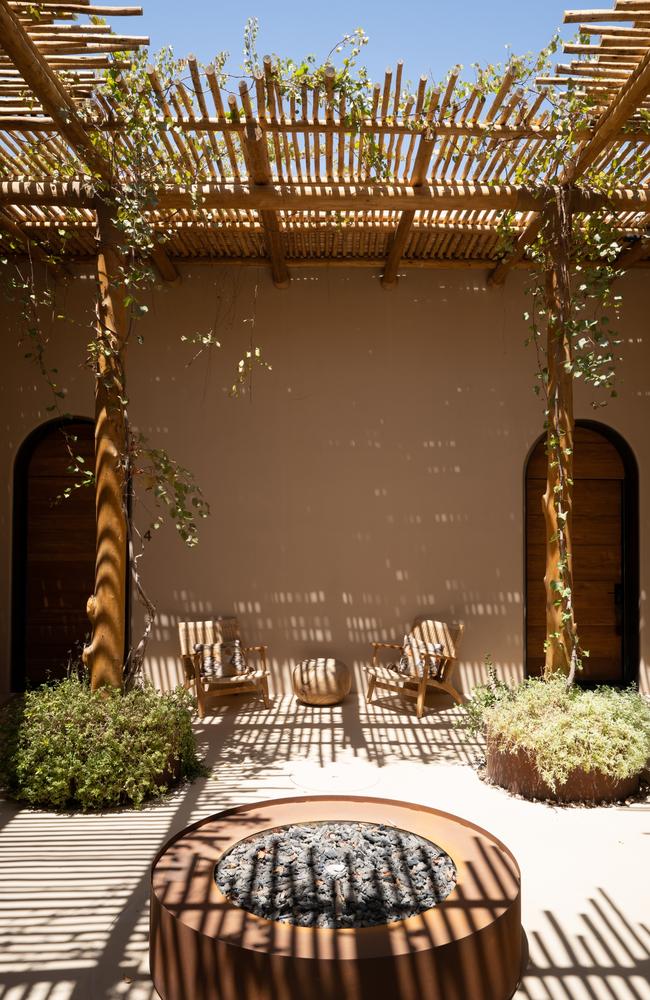
The next morning, I wake up to a buffet spread at the Midian restaurant even more expansive than I’d seen at any of Tel Aviv’s high-end city hotels in the days beforehand. The counter of the open kitchen is covered in bowls and skillets heaving with char-grilled asparagus, pumpkin and leeks, zingy beetroot salads and bowls of crisp cucumber and heirloom tomato flecked with crumbled feta. My pillow-soft flatbread emerges from the tabun oven while I contemplate another helping of the baked cheesecake.
Lunches and dinners are served at the other restaurants; the poolside lounge and the jazzy Jamillah tapas joint, are just as inspired, featuring Israeli and Mediterranean- tinged flavours with ingredients sourced from farmers at nearby kibbutzim and the resort’s organic gardens.
Everything – down to the ketchup – is made in-house from scratch. At night, Jamillah turns into a clubby hangout with a cool factor that rivals even those in turbo-smart Tel Aviv. Between giant ceiling-mounted loudspeakers and tribal tapestries, staff with tattooed arms and piercings in their nose shake up drinks with date-infused ouzo and peppercorn Campari, while a DJ spins desert-inspired beats from Douek’s extensive vintage vinyl collection.
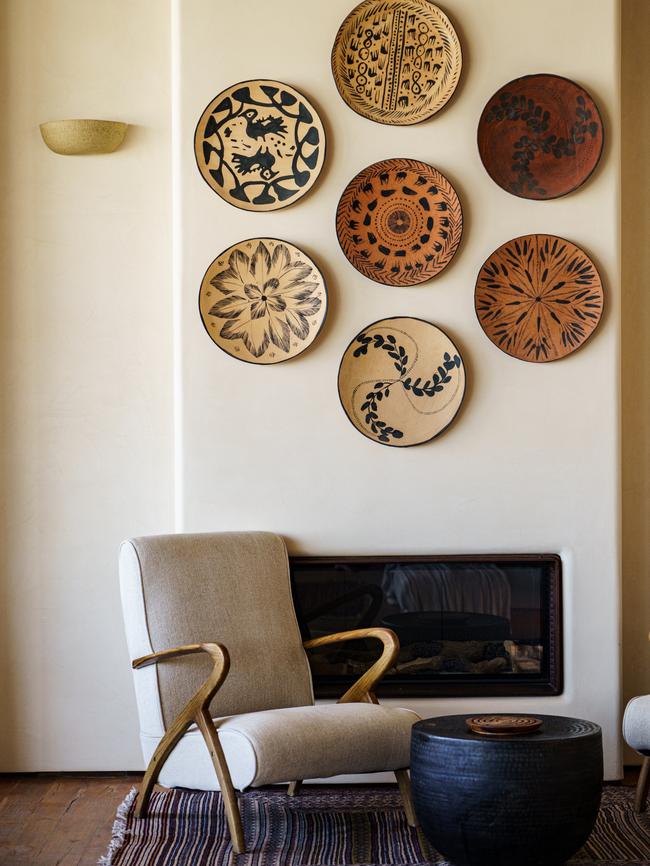
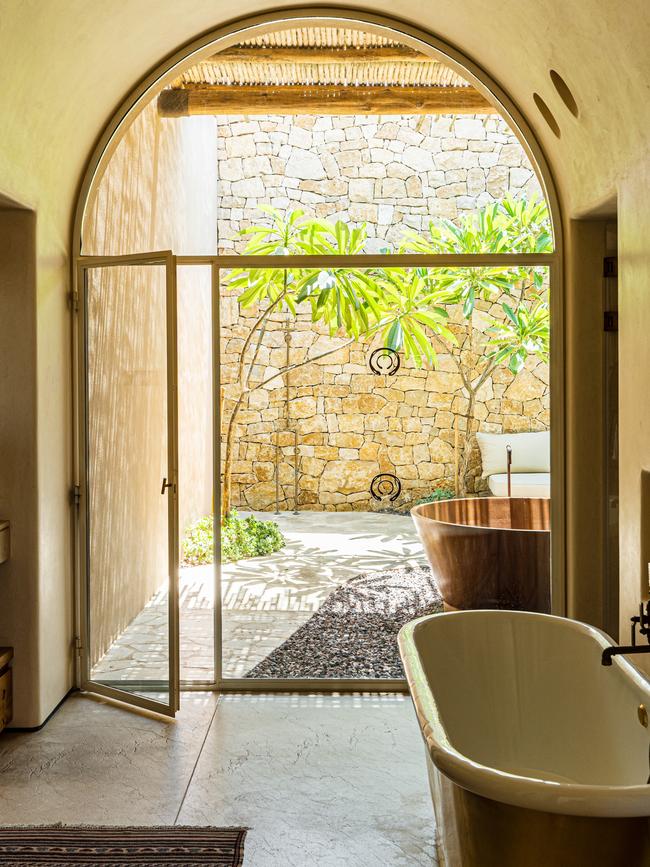
But the serene setting and feel-good food are only part of the resort’s wellness equation. The Six Senses brand has well-being embedded in its DNA, and its Israeli outpost is no exception. Bordering the lounger-lined pool with views over Jordan’s Edom mountains on the horizon, the two-level spa is where guests shed their final bits of stress and strain.
The space has his-and-hers hammams and saunas, a breezy yoga studio and six monastic treatment rooms (which, somewhat inconveniently, lack en-suite bathrooms). There’s a subterranean lap pool and, at the adjoining Alchemy Bar, local-minded workshops draw on the resort’s organic gardens tufted with rosemary, za’atar, oregano and three different kinds of basil, which guests can turn into herbal massage compresses and exfoliating scrubs with oats and Atlantic salt.
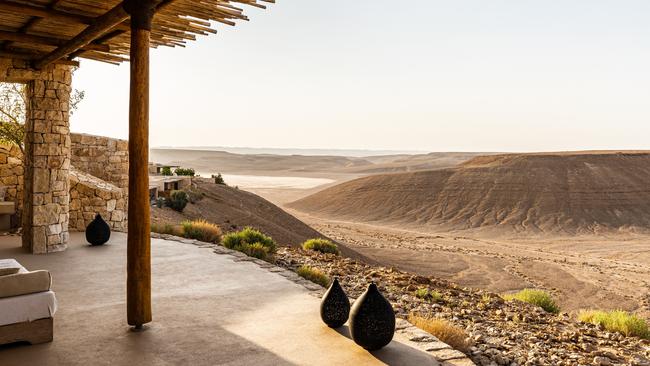
The wellness program includes full-on immersions from three to 10 nights. They range from high-tech sleep therapy with bedside trackers and specialty bedding to Ayurvedic rejuvenation and mind-boosting courses with guided yoga sessions, massages and personalised dietary plans. Or, as I do, guests can choose from an à la carte treatment menu covering everything from deep-tissue massages to facials and body wraps with Japanese red algae. I try the “sound journey”, which has me almost drift asleep as the room fills with the soothing vibrations of Tibetan singing bowls.
Further tensions are released during my massage with hot Himalayan stones. They work wonders on my back, while the angelic voice of my softly spoken therapist, Hadar, is enough to lull the noise in my head into blissful submission.
“The whole idea is to bring people out to the desert to relax,” the spa’s motherly wellness director, Nina Shapiro, tells me while we sip endorphin-boosting geranium tea in the spa lounge, my mind still hazy in post-treatment bliss. “That’s what we’re all about – helping our guests return to a state of balance.”
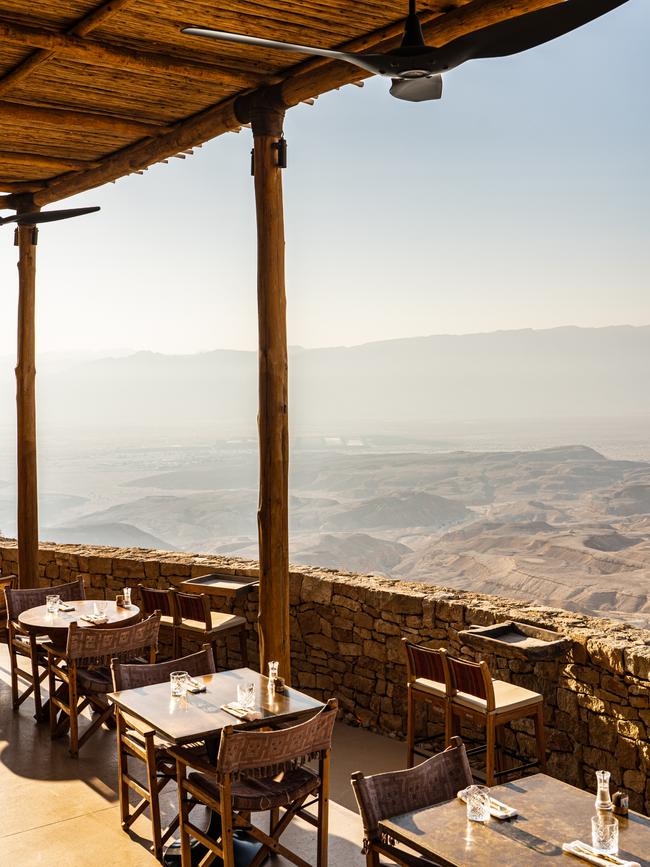
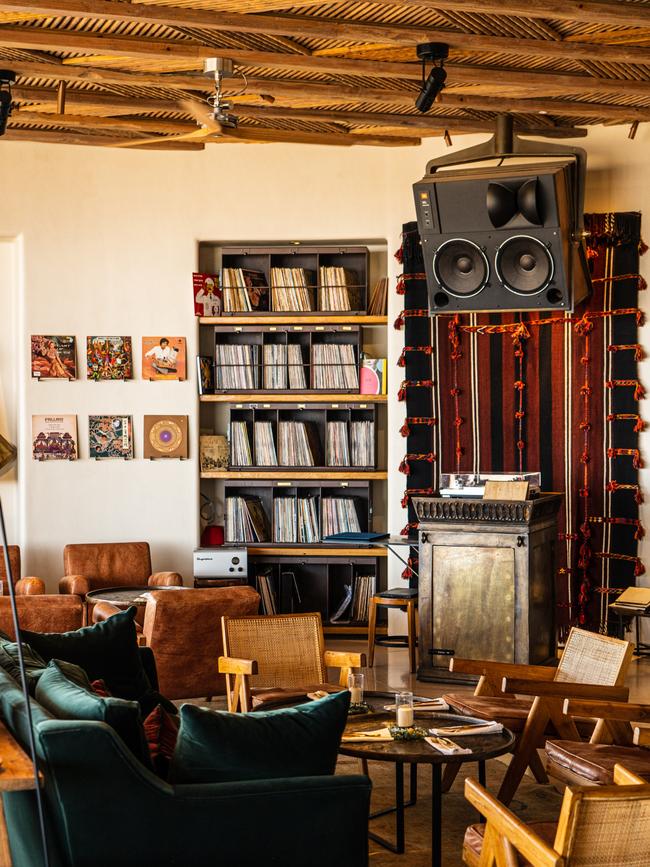
On my last morning I set out into the desert with Hen Yannay, a retired photographer, all-round adventurer, and my guide for the trek. Within five minutes of walking out of the lobby, we pass the ruins of a temple, believed to be several thousand years old. Yannay points out shards of magmatic stone, and layers of sedimentary and metamorphic rock cladding the cliff sides that run down the Great Rift Valley all the way to Mozambique.
“For geologists, this is a paradise,” he says. For the rest of us, though, life in this arid area is challenging. Only the toughest of species survive, and even those seem to struggle – there are plenty of parched remains of desert-dwelling flora littered around. On average, this part of the world sees only 30 millimetres of rain per year. Often all at once in a mega- cloudburst that sees the desert spring back to life.
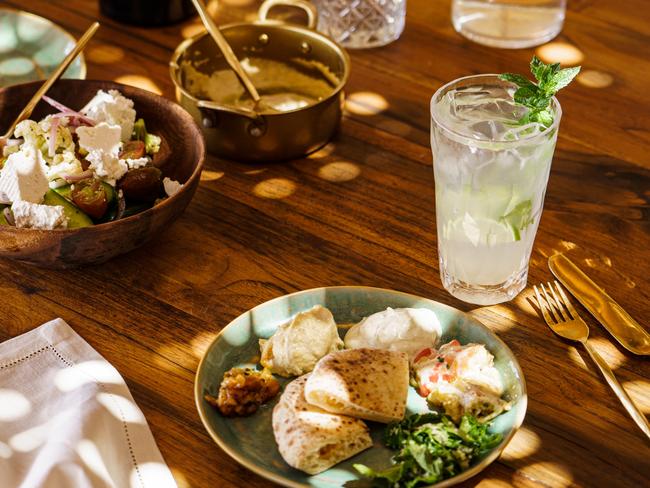
But thanks to a brilliant feat of engineering, life at Six Senses Shaharut is constantly comfortable. During lunch back at the resort, I hear the muffled whomp of a tank firing in one of the military training facilities dotting the area – a sobering reminder of the contentious history of this region. The guests around me – well-off Israelis and lots of Jewish travellers from abroad – don’t bat an eyelid. I swipe another piece of bread through my hummus, and decide to pay it no mind. Here in the Negev Desert, silence really is golden.
The writer was a guest of Six Senses Shaharut. The brand is developing a second property in Israel, Six Senses Tel Aviv, slated to open in late 2025.
Looking to reboot and relax? Discover life-changing wellness retreats and restorative getaways in the latest edition of Travel + Luxury magazine.

To join the conversation, please log in. Don't have an account? Register
Join the conversation, you are commenting as Logout